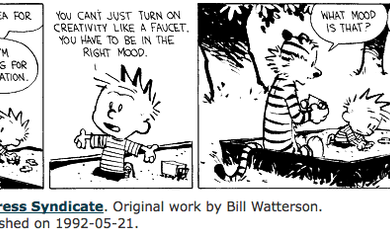This week we’re looking at Hanlon’s Razor. It’s a lovely model to apply liberally in both personal and professional life.
Beware – it’s deceptively simple. At first glance, this might appear to be some soft, simplistic, pollyanna stuff – but actually, it’s a deeply powerful tool for thinking! 💪
Who’s Hanlon? And what’s a “razor”?
Robert Hanlon was a guy from Pennsylvania who generally gets the credit for coming up with this razor.
In this sense, a razor is a not a shaving device, but a short philosophical statement which is a useful rule of thumb. It’s a shortcut that we can use to make our quick judgements be more accurate.
What is Hanlon’s Razor?
It’s as simple as this:
Never attribute to malice that which is adequately explained by stupidity.
When something bad happens to us, as egocentric humans we have a tendency to quickly judge that it was the result of malice – of some bad intent.
That person that cut you off in traffic? We can often automatically assume they are a selfish jerk. But if we apply Hanlon’s Razor, we might consider that maybe they are just quite an unskilled driver and possibly didn’t even see us.
That person who turned up late?
I know oftentimes I’ll be certain of the worst (leaving no room for benefit of the doubt) and then later I’ll get further information and find out that that my assumptions were completely wrong.
Hanlon’s Razor is warning us to be careful when assuming bad intent, because it’s much less likely that we tend to imagine!
I’ll leave the last word for Goethe, who wrote:
Misunderstandings and neglect create more confusion in this world than trickery and malice. At any rate, the last two are certainly much less frequent.
Goethe
Want to go deeper?
📖 Razors help us shortcut a whole load of cognitive bias. The king of this research is Daniel Kahneman, and his book Thinking Fast And Slow is one I recommend reading and then re-reading.
👏 That Goethe quote comes via this terrific detailed post on Hanlon’s Razor.
💛 David Foster Wallace’s classic commencement speech This Is Water builds on this theme and is well worth the time. Read it here.
Got comments?
Comment below if you have any thoughts or tweet me @juliaclavien. Until next week dear Mental Modelers! 🙇






